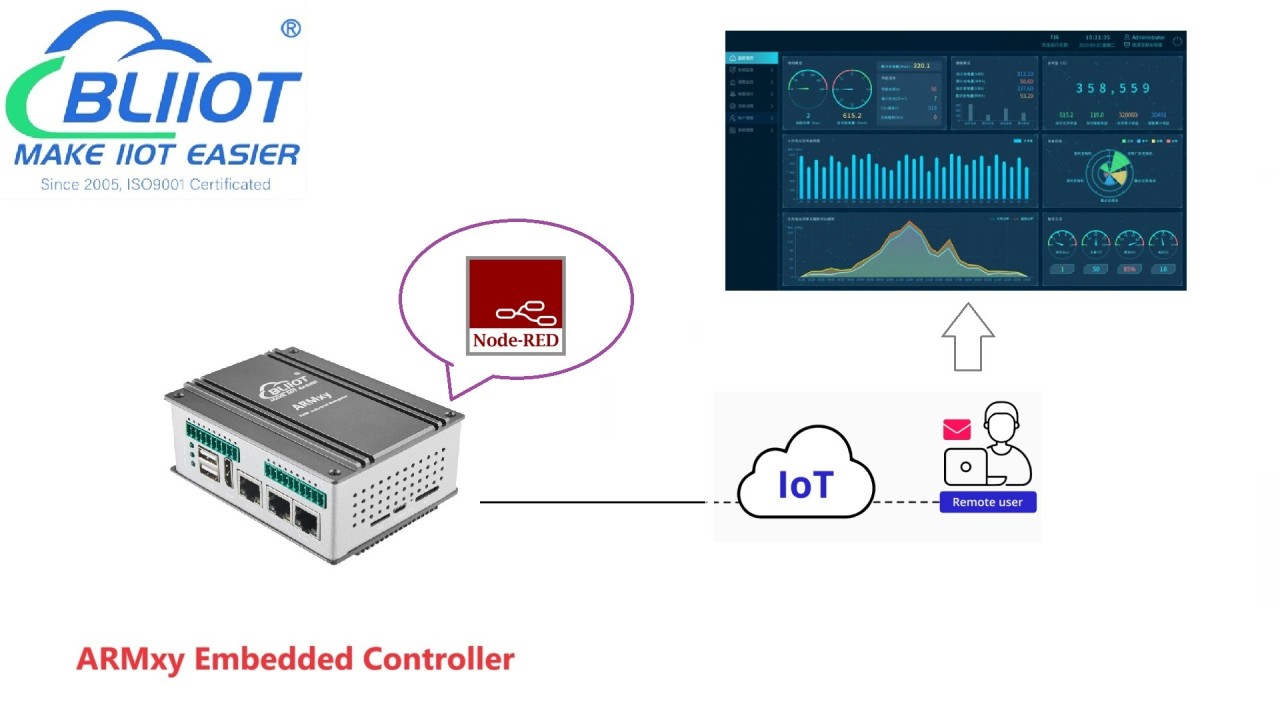What's the difference between DDC and PLC?
Foreword
What is DDC?
Direct Digital Control (DDC) is an automated control system that directly controls equipment or processes through digital computers. This control method is widely used in various industrial automation and building automation systems.
What is PLC?
A programmable logic controller (PLC) is a digital computer used in industrial control systems. It is used for various control tasks in automated manufacturing processes.
What is the difference?
DDCs are a control process where a computer acts as the controller. DDCs continuously monitor sensor information and record it in an internal database. They then automatically generate corrective output commands based on changing control conditions.
DDCs provide similar functionality to more traditional control systems, but produce faster and more accurate corrective outputs. They also support remote control monitoring.
Because DDCs provide real-time data, operators can adjust settings from any connected device. Real-time system outage or service failure alerts enable faster responses, meaning that minor issues can be addressed remotely before they become major maintenance issues.
A PLC is a hardware device with a dedicated internal CPU and operating system. They are widely used in industry and manufacturing to automate machine functions, processes, or production lines.
PLCs read and process data collected from sensors placed in industrial processes. They use this data to trigger actions based on a pre-programmed framework of activities.
PLCs are highly customizable and can be adapted to provide automated control solutions for a variety of purposes. They are widely used in Industry 4.0 and Internet of Things (IoT) applications across a variety of industries, including manufacturing and engineering, HVAC, and oil and gas.
They can pass data using standard messaging protocols, including SQL when connecting to databases and MQTT when communicating with the cloud.
PLC and DDC - Which is best?
There are many factors to consider when deciding whether a PLC or DDC is the best solution. However, the best option usually comes down to what you want the control system to do and in what environment you will be using it.
For high-performance, 24/7/365 or mission-critical operations, PLCs are often the best choice because they offer a longer "mean time between failures" (MTBF) than DDC-based systems.
They are also generally more rugged than DDCs, and their ruggedness is more suitable for heavy industrial environments and manufacturing facilities.
And because PLCs can help reduce the costs associated with unplanned downtime and risk to human life, they can also reduce the total cost of ownership.
On the other hand, DDC control is better suited for automating non-mission-critical facilities, where a lower MTBF is acceptable. Commercial environments such as office buildings, shopping centers, light industry, and non-critical processes are well suited to DDC-based monitoring and control systems.
DDCs are not really suited for high-availability environments. DDC components cannot be "hot" swapped without first powering down the controller, which results in system downtime, whereas with PLCs, this is possible.
While most DDC systems can be easily integrated with many application programming interfaces (APIs), they are not available in open source.
PLCs are more flexible and adaptable. Many PLCs offer open source coding options that allow users to customize control outputs based on actual needs rather than estimates of needs. This improves usability and plays a major role in improving overall process efficiency.
Therefore, in general, PLCs are a better choice than DDC controls in high-availability, high-performance environments.
Cheaper building monitoring Devices --BLIIoT BACnet/IP IO System BL207

BACnet/IP IO System BL207 is a distributed, pluggable, compact, programmable IO system launched by BLIIoT Techn based on the latest Building Automation Control Network technology. It has built-in programmable logic control function, which can replace some functions of DDC.
BACnet/IP IO System BL207 provides dual network ports to support switch cascading function, supports standard BACnet/IP protocol, and can also be used to access BACnet/IP controllers. It can be adapted to BACnet/IP master stations such as Johnson, Honeywell, and Siemens, and is suitable for data acquisition and control of building automation systems.
BACnet/IP IO System BL207 consists of a coupler and IO module, uses Web configuration, has built-in programmable logic control function, and can expand up to 32 M series IO modules with different functions such as DI, DO, AI, AO, thermocouples, and thermal resistors. It uses a high-speed backplane bus, fully loaded with 32 slaves, and a maximum scan cycle of 10ms. The coupler has its own diagnostic function, which can monitor the communication status of the IO module in real time and provide a 2000mA drive circuit for the IO module.
BACnet/IP coupler BL207 has a compact structure and small size. It is suitable for building automation control systems and HVAC control systems.
More information about BLIIoT BACnet/IP IO System BL207: https://www.bliiot.com/bacnet-ip-io-module-p00397p1.html
















